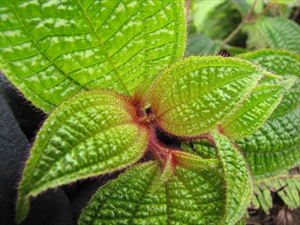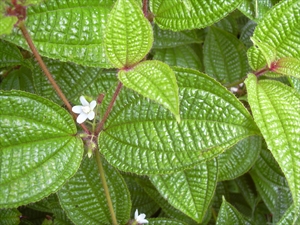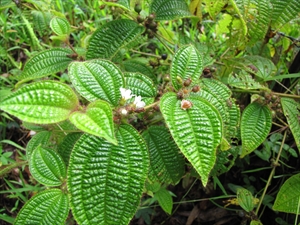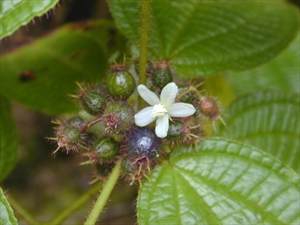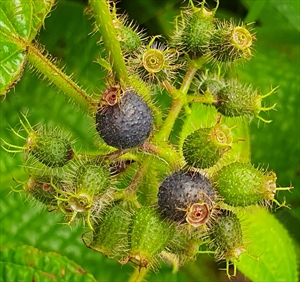- Widespread. Asia, East Africa, South and Southeast Asia, North, South and Central America, Caribbean, Oceania. In many Pacific islands.
- Important invasive perennial bush: high seed production, rapid growth, tolerance to many disturbed and undisturbed environments. A threat to Pacific islands, forming dense thickets, smothering plantations, pastures, native vegetation, including forests.
- Stems, up to 1m, round, hairy. Leaves, 5-18 cm long, dark green, paired along stems, five distinct veins and cross-veins, more hairy below, on short leaf stalk. Flowers, clusters in leaf forks and at branch tips, on short stalks, with five white or pink petals, and claw-like stamens. Fruits, round, purplish-black berries with about 100 brown seeds.
- Spread: seed by birds and floodwaters, vehicles, pigs, on clothing, trade in ornamentals.
- Biosecurity: high risk of introduction. In Australia, 'restricted invasive plant': do not release into environment, give away or sell. Among 100 of World's Worst Invasive Alien Species (IUCN, 2020). Can be bought via internet.
- Biocontrol: Success with Liothrips urichi (Fiji); recently (Hawaii), Lius peisodon, for shaded areas; Colletotrichum gloeosporiode f.sp. clidemiae, for drier parts.
- Cultural control: pull-out seedling, dig out shrubs, cultivate land; control feral pigs; vehicle hygiene to remove seed.
- Chemical control: in Australia: glyphosate (and Fiji); metsulfuron-methyl; fluroxypyr.

